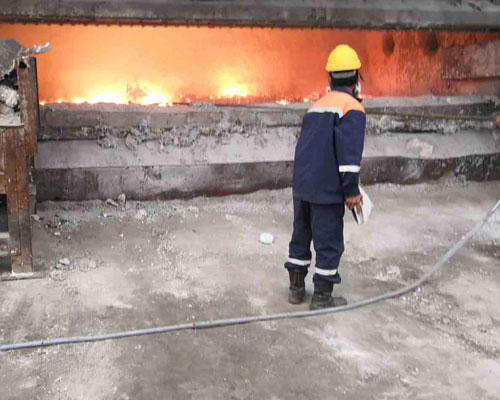During the refining process, the flue gas emissions of Flux Refining Aluminum are significantly reduced, the refining process is simplified, the smelting burning loss is reduced, the production cost is significantly reduced, and the melt purification effect is equivalent.
Flux Refining Aluminum reacts peacefully in aluminum water, does not burn violently and produces a lot of smoke, and has low moisture content, which can create a good working environment and meet the national environmental protection and industrialization requirements.
The product is granular (0.82-3.15mm), which has a larger contact area than the massive refining agent and molten aluminum. The degassing and slagging effect is better.

Cast-rolled 3102 aluminum alloy billet is used to produce air conditioner foil, and its production process is optimized: the chemical composition of 3102 aluminum alloy is strictly controlled as required, and the refining process in the furnace and the filtering means outside the furnace are added to make the mechanical properties of the cast-rolled billet uniform. The number of rolling passes is reduced, and the 3102 aluminum alloy air-conditioning foil produced has achieved the expected effect.
The quality of the 5754 aluminum alloy rod casting has an important impact on the performance of the profile. Through the analysis of various factors affecting the quality of the aluminum alloy rod, a large-diameter high-quality aluminum alloy rod with accurate composition control and uniform distribution is prepared.
Aluminum alloy rods are very important for the production of qualified aluminum alloy profiles. Due to the high Mg content of the alloy, the formed oxide film is less dense and easy to inhale and burn. Therefore, the smelting should be appropriately reduced under the premise of ensuring fluidity. Temperature, and appropriately increase the amount of covering agent and Refining Flux Aluminum to reduce burning loss and gas content. On the other hand, the alloy is susceptible to external pollution such as flux and furnace body, and has a high tendency of sodium embrittlement. Therefore, No. 2 should be used. Flux to reduce the tendency of sodium to embrittlement.
Aluminum alloy has extremely wide applications in aerospace, railway transportation, and ordinary life.
How to deal with the aluminum alloy waste generated in the production and processing process has also become a concern of all countries in the world.
How to increase the utilization rate of aluminum alloy, recycle aluminum alloy scraps, and realize the virtuous recycling of aluminum alloy resources, plays an important role in the social economy.
The traditional recycling method of aluminum alloy scrap has low recycling rate and high recycling cost. It is difficult to recover aluminum scraps, and is seriously oxidized and burned. In addition, covering agents and refining agents must be added during the remelting process, resulting in harmful gases and poor safety factors.

